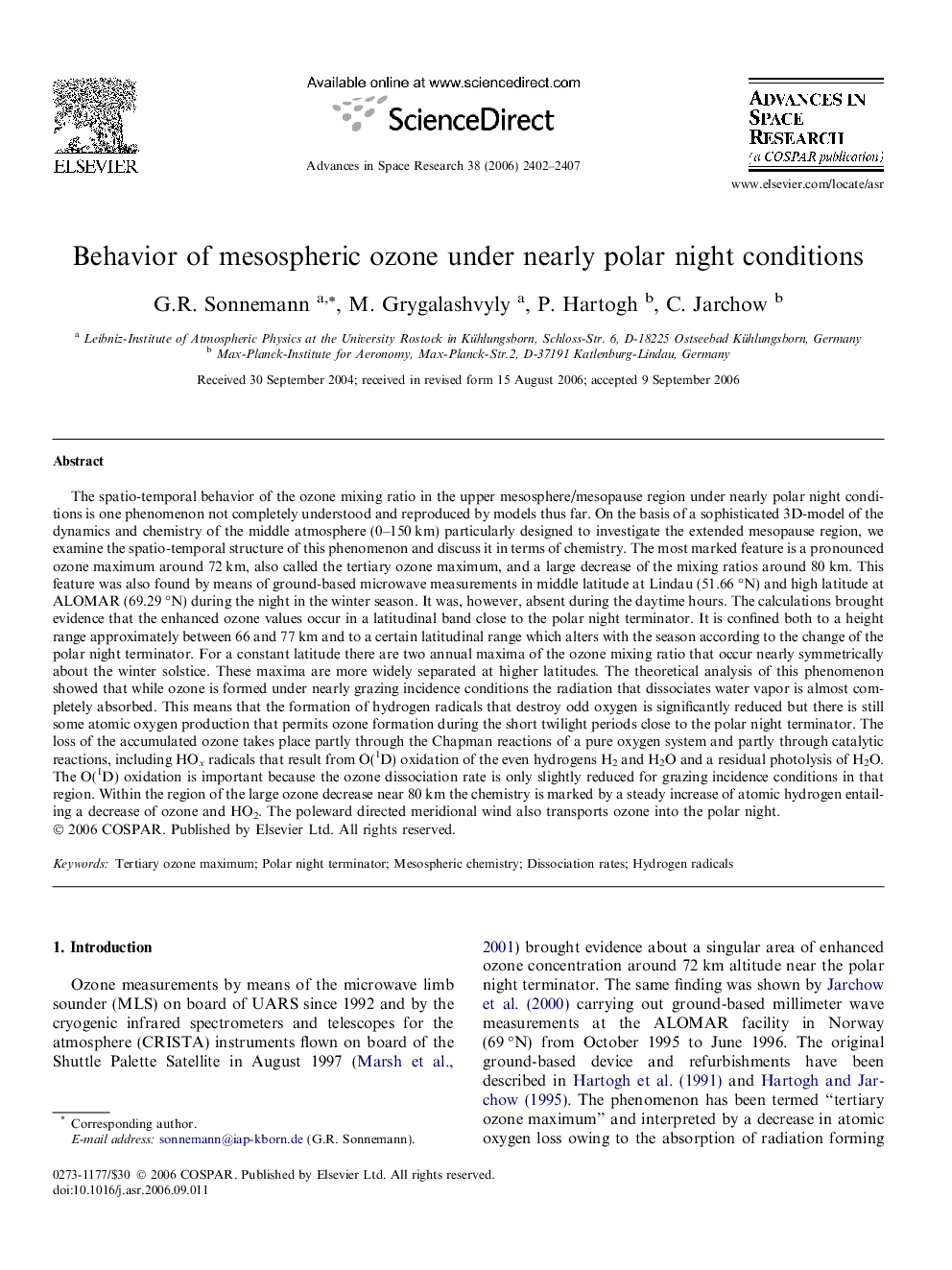| کد مقاله | کد نشریه | سال انتشار | مقاله انگلیسی | نسخه تمام متن |
|---|---|---|---|---|
| 1767684 | 1020200 | 2006 | 6 صفحه PDF | دانلود رایگان |

The spatio-temporal behavior of the ozone mixing ratio in the upper mesosphere/mesopause region under nearly polar night conditions is one phenomenon not completely understood and reproduced by models thus far. On the basis of a sophisticated 3D-model of the dynamics and chemistry of the middle atmosphere (0–150 km) particularly designed to investigate the extended mesopause region, we examine the spatio-temporal structure of this phenomenon and discuss it in terms of chemistry. The most marked feature is a pronounced ozone maximum around 72 km, also called the tertiary ozone maximum, and a large decrease of the mixing ratios around 80 km. This feature was also found by means of ground-based microwave measurements in middle latitude at Lindau (51.66 °N) and high latitude at ALOMAR (69.29 °N) during the night in the winter season. It was, however, absent during the daytime hours. The calculations brought evidence that the enhanced ozone values occur in a latitudinal band close to the polar night terminator. It is confined both to a height range approximately between 66 and 77 km and to a certain latitudinal range which alters with the season according to the change of the polar night terminator. For a constant latitude there are two annual maxima of the ozone mixing ratio that occur nearly symmetrically about the winter solstice. These maxima are more widely separated at higher latitudes. The theoretical analysis of this phenomenon showed that while ozone is formed under nearly grazing incidence conditions the radiation that dissociates water vapor is almost completely absorbed. This means that the formation of hydrogen radicals that destroy odd oxygen is significantly reduced but there is still some atomic oxygen production that permits ozone formation during the short twilight periods close to the polar night terminator. The loss of the accumulated ozone takes place partly through the Chapman reactions of a pure oxygen system and partly through catalytic reactions, including HOx radicals that result from O(1D) oxidation of the even hydrogens H2 and H2O and a residual photolysis of H2O. The O(1D) oxidation is important because the ozone dissociation rate is only slightly reduced for grazing incidence conditions in that region. Within the region of the large ozone decrease near 80 km the chemistry is marked by a steady increase of atomic hydrogen entailing a decrease of ozone and HO2. The poleward directed meridional wind also transports ozone into the polar night.
Journal: Advances in Space Research - Volume 38, Issue 11, 2006, Pages 2402–2407